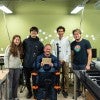
’Tis the season of giving . . . and engineering
The holiday season kicked off early this year for a Rice staff member who received a welcome and much-needed gift from a team of freshman engineering students.

’Tis the season of giving . . . and engineering
The holiday season kicked off early this year for a Rice staff member who received a welcome and much-needed gift from a team of freshman engineering students.
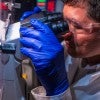
Molecular jackhammers’ ‘good vibrations’ eradicate cancer cells
Rice scientists and collaborators at Texas A&M University and University of Texas MD Anderson Cancer Center have found a new way to kill cancer cells by using near-infrared light to make a small dye molecule attached to their membrane vibrate strongly. It is the first time this kind of mechanical molecular action has been used as a potential therapy.

For this emergent class of materials, ‘solutions are the problem’
Rice materials scientists developed a fast, low-cost, scalable method to make covalent organic frameworks (COFs), a class of crystalline polymers whose tunable molecular structure, large surface area and porosity could be useful in energy applications, semiconductor devices, sensors, filtration systems and drug delivery.
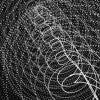
Electronic pathways may enhance collective atomic vibrations’ magnetism
A new study from Rice’s RAMBO laboratory and collaborators suggests the magnetism of phonons, collective atomic vibrations, is enhanced by electronic pathways.

Rice-Hamburg U. of Technology launch research collaboration
Rice chemical engineer Walter Chapman is spearheading a collaboration with the Hamburg University of Technology’s SMART Reactors Collaborative Research Center, which aims to develop solutions in support of a transition from fossil fuel to renewables-based economic and production chains through innovative reactor design and development.
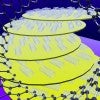
Chance twists ordered carbon nanotubes into ‘tornado films’
Rice scientists in the lab of Junichiro Kono have developed two new methods to create ordered carbon nanotube films with either a left- or right-handed chiral pattern.

Rice faculty among 2023 PATHS-UP Seed Fund award winners
Spurred by the first Digital Health Workshop held at Rice in August, 10 clinician-engineering teams have been selected as PATHS-UP Seed Fund award winners for projects that explore promising new directions for advancing digital health solutions with several Rice faculty members among awardees.

Rice to host National Society of Black Engineers’ Fresh Start event
Rice University will host the National Society of Black Engineers Houston Professional Chapter’s Fresh Start event this week, expecting a record number of participants. The Dec. 9 event at Rice’s Ley Student Center aims to engage third- through 12th-grade students in interactive workshops that creatively explore the various disciplines in the field of engineering.
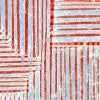
Rice engineers tackle hard-to-map class of materials
Rice materials scientist Yimo Han and collaborators mapped the structural features of a 2D ferroelectric material made of tin and selenium atoms using a new technique that can be applied to other 2D van der Waals ferroelectrics, unlocking their potential for use in electronics and other applications.

Disc around star observed in another galaxy for the first time
Astronomers have uncovered evidence of an extragalactic accretion disk for the first time.
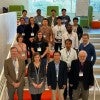
Rice physicists launch extreme quantum materials symposium
An international audience of more than three dozen quantum researchers, including Rice’s Pengcheng Dai, Randall Hulet, Douglas Natelson, Han Pu, Ming Yi and Boris Yakobson, attended the Vannevar Bush Faculty Fellowship Symposium on Extreme Quantum Materials at Rice Nov. 9.

Rice’s Pedro Alvarez wins Chinese Chemical Society’s Outstanding Achievement Award
Pedro Alvarez, the George R. Brown Professor of Civil and Environmental Engineering at Rice, received an Outstanding Achievement Award from the Chinese Chemical Society for his “long-term systematic contributions in basic research and technology development in the field of environmental chemistry.”

Kavli Exploration Award backs Rice-led sustainable carbon materials research
An international team of scientists led by Rice’s Matteo Pasquali has won a $4.1 million grant to optimize carbon nanotube synthesis. The award is a joint effort by The Kavli Foundation, with a $1.9 million Exploration Award in Nanoscience for Sustainability, and Rice’s Carbon Hub, which contributed an additional $2.2 million.
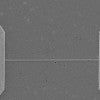
‘Strange metal’ is strangely quiet in noise experiment
Rice experiments have provided the first direct evidence that electricity seems to flow through “strange metals” in an unusual liquid-like form. The first “shot noise” experiments on a strange metal from the Vienna University of Technology (TU Wien) are detailed this week in Science by physicists from both universities.

Rice receives $2.5M grant to support inclusive STEM education
The Howard Hughes Medical Institute awarded Rice University with $2.5 million spanning over five years as part of its Driving Change initiative designed to connect research universities that are working to build inclusive learning environments for students in science, technology, engineering and mathematics.